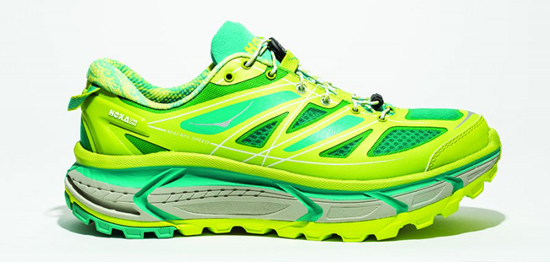Jason Bahamundi will go to his grave clutching his pair of Hoka One One running shoes. The finisher of five Ironman races and multiple ultramarathons swears by the big, cushy shoes—and he’s not alone. The brand saw sales increase 350 percent from 2013 to 2015 and most running shoemakers now have a maximalist offering. As legions of runners flock to the over-cushioned category, however, they risk some tradeoffs if they don’t do some back-end work—a false sense of security being one.

“The shoes might not be bad, but they will allow you to get away with some movement dysfunction,” says elite runner, physician and natural running advocate Mark Cucuzzella. “If an 80-year old runner wants to run a few miles a week and these shoes allow him or her to do that, great. But for a young marathoner putting in high mileage, ultimately the body will pay a price if the runner doesn’t have good form.”
Physical therapist Dr. Robert Gillanders from Washington, D.C., agrees. “If you think all that cushion will fix things or allow you to stay injury-free, you are being short-sighted,” he says. “When we step back and look over injury statistics dating to the 1970s, not much has changed. Runners still make the same mistakes and equipment variations aren’t improving that.”
Gillanders points out that research shows runners who avoid injuries tend to be those who land softly. He worries that when a runner straps on a heavily cushioned shoe, he or she perceives a soft landing when in fact the opposite is true. He points to a 2007 study in the Journal of Sports Science that tested athletes landing on force plates. When told they were running on soft surfaces, they actually hit the ground harder than when they perceived themselves to be running across hard surfaces.
[jbox color=”yellow” icon=”http://naturalrunningcenter.com/wp-content/uploads/2016/03/amanda-loudin-60×60.png” title=”Amanda Loudin”]
Amanda Loudin‘s work has appeared in Zelle by Runner’s World, Baltimore Magazine, the Daily Burn, Weight Watchers magazine and many others. She have also shared the health and fitness gospel through her former blog, MissZippy, and designed copy for many partner brands on their platforms or mine. Amanda have also worked with the Baltimore Running Festival, the Wildflower Triathlon, the New York City Marathon, Vivobarefoot, Newton Running, YouFit Health Clubs and more.
[/jbox]


I have never worn Hokas, nor will I. I can only imagine that they must neutralize all the tendon, arch, and muscle spring actions that are natural if our running gate is finely tuned. Barefoot running skeptics often talk about running on soft surfaces if you are going to go without shoes. As a somewhat experienced barefooter, I’ve noticed that one can feel the energy being robbed when running on softer surfaces, like a nice grassy field. Has anybody else noticed this?